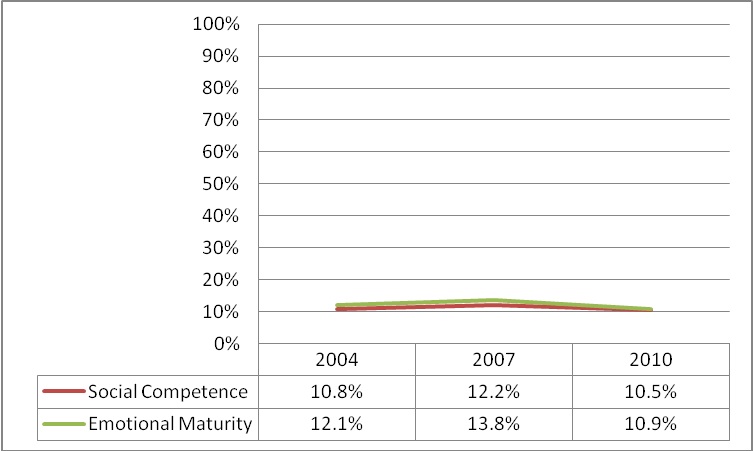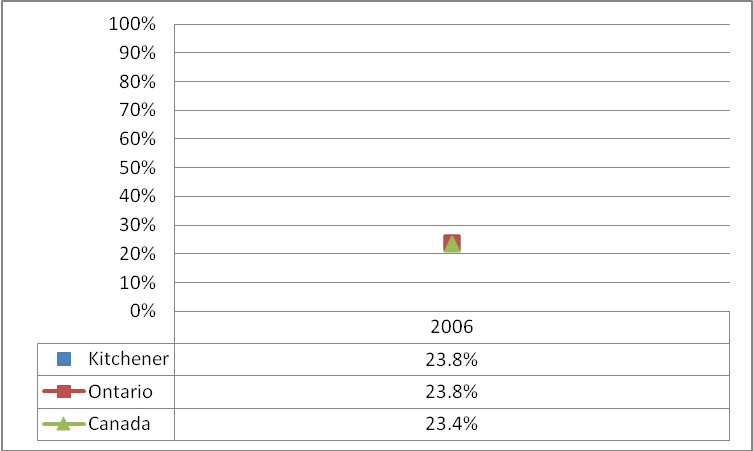Posts Tagged ‘Ontario’
Posted on: July 14th, 2014 by Smart on Crime
This article appeared in the July 14, 2014 edition of the Waterloo Region Record.
What if you could save a life? Just one life. Would you? For almost all of us the answer to these questions is an enthusiastic yes. Without question, regardless of anything, a life, just one life, is worth saving.
But what if saving that person’s life tested your political standpoints around drug use? Would that life still be worth saving? Across this country people are dying from legal and illegal drug use. Reliable statistics on drug overdoses across Canada are difficult to find, but research by the Ontario coroner shows that on average there is an overdose every day in our nation’s capital and 33 people a year die from overdose in Ottawa. Clearly, people who use drugs along with their family and friends, come face to face with death all the time. But what can be done? How can we save people? One answer lies in the way emergency services respond when they receive drug overdose emergency calls.
If you were to witness a heart attack, you would call 9-1-1 without hesitation. You would not think of the repercussions of making that call – someone is having a heart attack and their life needs to be saved. Now try to imagine how this scenario changes: it is not a heart attack, it is a drug overdose. Our research, published in the most recent issue of the Journal of Critical Social Work , shows that people who witness overdoses think very hard about the repercussions of making that call to 9-1-1. Sometimes these repercussions are too great – people will hesitate or not call at all.
Fear of arrest weighs heavily on this life or death decision. People legitimately fear the police showing up, being criminally charged for drug possession, and for mothers, having their children taken away. All of these consequences anxiously whirl around in the panicked mind of a witness. What happens? Over half of the people surveyed do not make the critical 9-1-1 call. Some may try to help the victim themselves, which sadly can have dangerous consequences. Street remedies can often make the situation worse. The longer someone waits for medical assistance the more likely that a life will be lost.
So what can be done? How can we save people? One idea used in Vancouver is to limit police involvement in routine overdose calls. The theory goes, if you don’t send the police there is no reason to fear calling 9-1-1. Unfortunately, this solution won’t work in many parts of Canada. In many cities and most rural communities the police are often the first responder and those in the best position to save an overdose victim’s life. A more feasible, Canada-wide option is Good Samaritan Drug Overdose Laws. These laws protect overdose victims and someone who calls 9-1-1 from arrest for being under the influence, simple drug possession, and possessing drug paraphernalia. They do not protect people from serious offenses such as trafficking. Good Samaritan Drug Overdose Laws exist in several American states. Preliminary evaluation of Good Samaritan Drug Overdose Laws out of the United States show that 88% of opiate users are aware of the law and are more likely to call 9-1-1.
Making naloxone, also known as Narcan, available in every province without a prescription is also an essential piece of this puzzle. Naloxone can be easily administered and it temporarily counteracts the effects of drug overdose, providing precious time to get the person to the hospital. The Ontario Health Ministry recently introduced naloxone for public distribution and emergency responders watch in amazement as the compound saves lives.
Ultimately if we truly believe that every life is precious, then the answer is policy change. We need to reduce the barriers to calling 9-1-1 during routine drug overdoses by providing limited legal immunity through Good Samaritan Drug Overdoes Laws and we need to work on distributing naloxone across Canada, barrier-free. That life, that one life, would be saved.
If you ever are unfortunate enough to witness a drug overdose the correct course of action is to call 9-1-1, perform CPR if the victim has stopped breathing and administer naloxone if you have access to it.
Author: Kayla Follett is a Master of Social Work graduate, with the Newfoundland and Labrador Sexual Assault Crisis Centre. Her research on this topic was conducted during an internship with the Waterloo Region Crime Prevention Council, and was published in the July 2014 issue of the Journal of Critical Social Work (co-authored by Anthony Piscitelli, Michael Parkinson and Felix Munger).
Posted on: September 17th, 2013 by Waterloo Region Crime Prevention Council
The length of involvement in schooling significantly impacts participation in criminal activity and the probability of incarceration. The table below tracks the percentage of residents in the Kitchener-Cambridge-Waterloo Census Metropolitan Area that do not have a high school diploma.
Data Source: Statistics Canada, Census (Released every five years)
Story Behind the Numbers
In 2006, 23.8% of residents in the Kitchener-Cambridge-Waterloo CMA did not have a high school diploma. This is the exact same as the Ontario provincial average and slightly above the Canada average of 23.4%. However, when the results are examined for individuals under the age of 35, the Waterloo Region has more residents without a high school diploma than the Provincial average. This is significant because individuals under the age of 35 are at the highest risk of participating in criminal activity.
Read the Community Responses
Posted on: September 17th, 2013 by Smart on Crime
It is no surprise that the length of involvement in schooling significantly impacts participation in criminal activity and the probability of incarceration, as found in Snapshot in Time: Root Causes of Crime in Waterloo Region. In fact, this has been well-known in the education sector for many years – which explains the great lengths to which school boards go in mitigating against this problem.
As part of the Student Success Learning to 18 Strategy — through the Re-engagement (12 & 12+) Initiative – school boards contact students who have either left school or have not been attending to re-engage them in their studies to complete their Ontario Secondary School Diploma (OSSD). Funding is provided to the boards to support programs for these students once they return and in Waterloo Region’s Catholic Schools we dedicate a significant amount of staff time to, first, actually locating the whereabouts of these students and then helping them complete their required volunteer hours and/or registered them at our St. Louis Adult Learning & Continuing Education Centres or their home secondary school to accumulate credits toward the OSSD.
The tracking of all of our in-risk students (Grade 9 to those that have left our system without an OSSD) is reported to the Ministry of Education along with other student success tracking data through “Taking Stock” reports. These reports outline the following:
- how many students our schools are tracking that are in-risk;
- are these students attached to a caring adult;
- was their timetable individualized;
- are they getting advice on pathways planning;
- has a strengths profile been created for the student.
Our own internal tracking for students who have left our system without an OSSD looks at:
- number of students contacted;
- did they register for courses, how many;
- how many credits did they accumulate.
In addition to the above some key initiatives are in place to meet the needs of all of our students on their way to successful completion of the OSSD.
- Specialist High Skills Majors allow students to focus on a future career through a bundle of classroom courses, workplace experiences and sector certifications
- Expansion of Cooperative Education allows students to count this hands-on learning towards two compulsory high school credits
- E-Learning provides students with online courses and allows teachers to share resources across the province
- Dual Credits count toward a student’s high school diploma as well as a college certificate, diploma or apprenticeship certification
- Credit rescue programs intervene prior to a student experiencing failure in a course
- Credit recovery programs allow students who have failed a course to only repeat expectations where they have been unsuccessful rather than redoing the whole course
- Supervised Alternative Learning programs allow students to work full-time, get mental health supports, volunteer hours and accumulate credits
So…when it comes to playing our role in reducing the number of local residents without a high school diploma you can rest assured Waterloo Region’s Catholic Schools are front and centre in closing the gap.
Author: David DeSantis is the Superintendent of Learning for the Waterloo Catholic District School Board and responsible for Student Success, Secondary Schools, St. Mary’s FOS, Leadership Development and Succession and 21st Century Teaching and Learning.
Posted on: September 10th, 2013 by Waterloo Region Crime Prevention Council
You might have noticed it in the title… the operative word being “early”. Every three years Senior Kindergarten teachers evaluate their students using the Early Development Instrument. This tool provides scores on a number of factors, two of which directly relate to crime prevention. Social competence measures a child’s interactions with others, ability to control their own behaviour, and cooperation with others. Emotional maturity measures a child’s ability for impulsivity control, ability to deal with feelings, and empathy for others. The percentage of children scoring low on these indices is noteworthy because antisocial behaviour among children is associated with an increased risk of persistent delinquency and criminal involvement later in life
The Statistics
 Data Source: Ontario Early Years Centre, A Community Fit for Children Report (Released Every Three Years)
Data Source: Ontario Early Years Centre, A Community Fit for Children Report (Released Every Three Years)
The Story Behind the Numbers
The percentage of children scoring low on the social competence and emotional maturity index declined from 2007 to 2010. However, despite the improvement Waterloo Region did not score as well as Ontario in 2011 which had 9.3% of children score low in social competence. Waterloo Region was also lower than Ontario, at 10.3%, on emotional maturity but this difference was not statistically significant. These numbers suggest that prevention opportunities exist through a focus on improving children’s emotional and social readiness for school.
Read the Community Responses:
Posted on: September 10th, 2013 by Smart on Crime
When reviewing the Snapshot in Time: Root Causes of Crime indicator comparing the 2007 and 2010 results of the ‘social competence’ domain of the Early Development Instrument, Waterloo region shows some improvement. 1.7% less children scored low on ‘social competence’ in 2010 than did three years previous, and this difference is statistically significant. While encouraging, the percentage of children in Waterloo Region who are vulnerable (scored low) on this domain is still 1.2% higher than that of Ontario as a whole. This tells us that we still have room for improvement as well as an opportunity to set a goal to match or do better than the Ontario average in this domain. Since children in Waterloo Region are not scoring significantly different than Ontario as a whole on the ‘emotional maturity’ domain and in fact the percentage scoring low has decreased, we want to continue with this trend. The inclusion of these indicators in understanding crime prevention serves as a reminder that the importance of early learning goes much beyond the reading, writing and arithmetic facets.
Currently, there are many organizations and agencies involved in addressing this issue in the community services sector. Ontario Early Years Centres provide universal, free access to early learning and parenting programs for children age 0-6 and their caregivers. Early Development Instrument data is used in program planning to help ensure that programs encompass the most current needs of the children and that programming brought into other sites across our communities are geared to address the areas of child development that need improvement. Operating as a “hub”, Ontario Early Years also connects families with other resources in the community that can provide services related to the early development of children, including social and emotional development.
Community and Community Health Centres, Neighbourhood Associations, Social Planning Councils, non-profit organizations such as the YMCA and KidsAbility, to name a few, also place great value on early child development as an up-stream approach to preventing negative child outcomes. Beyond the community services sector, local school boards, municipalities and public health units similarly use data on social and emotional development for planning programs and services for families.
Throughout my time working in the community services sector, I have seen how hard agencies work together not only to ensure that we are aware of the importance of early child development, but also to provide services that work towards reducing the number of vulnerable children. Programs that promote and offer early learning opportunities need to be prioritized, implemented and given a chance to prove their value in the long term. It is especially the universal programs which have the most impact.
 Author: Amy Romagnoli is the Data Analysis Coordinator at the YMCA Ontario Early Years Centre, working with data related to the developmental health and well-being of young children in Waterloo Region. She holds a Master’s degree in Sociology from Wilfrid Laurier University.
Author: Amy Romagnoli is the Data Analysis Coordinator at the YMCA Ontario Early Years Centre, working with data related to the developmental health and well-being of young children in Waterloo Region. She holds a Master’s degree in Sociology from Wilfrid Laurier University.
Posted on: June 28th, 2013 by Waterloo Region Crime Prevention Council
The data in the section of Root Causes of Crime in Waterloo Region titled Income of Low Income Families is no surprise to those of us who are familiar with poverty-related issues in our regional community. In fact, in Waterloo Region, 36 earners make more than $2.57M; 360 make more than $685K; 3,610 (the top 1%) make more than $396K. Individuals who make more than $81,200 are in the top 10%. On the other hand, the median income of the bottom 50% is $14,100!* In 2007, one third of employed individuals were earning $14.00/hour or less. This is poor – it may not be deep (or absolute) poverty, but it is precariously close to it.
Another point I’d like to make has to do with the title: ‘Income for Low Income Families’. I’m concerned that when we (government, media and community groups) use only the word ‘family’ or ‘children’ in our communications about poverty, we further stigmatize the ‘individual’. By leaving out the word ‘individual’ are we not practicing a type of exclusion even as we talk about and promote inclusion? Now, I know that the use of the word ‘individual’ in conjunction with poverty has greater stigma attached to it than the word ‘family’ or ‘children’ and most likely this is why many of us omit the ‘i’ word. But is this REALLY okay with you?
This brings me to the issue that is – in my opinion – the root of all root causes and needs the highest priority in order to significantly reduce and prevent poverty in the long term – this is the stigmatization of people living in poverty. Societal attitudes/values impact our political voting choices and influence policy decisions. It’s my belief that if enough of us TRULY believed that everyone was a valuable member of society, we’d have much better policies in place reflecting that belief.
Since 2007, as resources allow, Opportunities Waterloo Region has been working on an initiative to shift societal attitudes towards people living in poverty. As a result of the early work completed by partners from across Canada, a three-phase strategy was developed. The three steps are:
-
research deep-seated attitudes of Canadians towards people living in poverty,
-
research best practices, and
-
develop a comprehensive, long-term multi-faceted approach to shift these attitudes.
The research step is critical. We think we know what the attitudes are, but these might be ones that are only visible on the surface. We need to know what the deep-seated societal attitudes are and how (or if) they connect to one another, so that we can create an effective communications strategy. Lofty goal? Big job? You bet!
This project stalled because we could not find the research dollars to begin the first step. Then in 2011, as a result of Opportunities Waterloo Region’s long-term partnership with Dr. Terry Mitchell, Associate Professor, Psychology at Wilfrid Laurier University, we were able to begin a project to research deep-seated societal attitudes towards people living in poverty. Some of the data collected over the two years was analyzed, the results of which was presented at the May 28th Community Conversations Series event. You can view the presentation here. The findings were discussed and ideas for next steps considered. A fact sheet is currently being developed and will be share in our September newsletter.
If you’d like a copy of the fact sheet or further information about the research project, please let me know. Although we don’t have all the answers yet, progress has been made, various strategies to shift attitudes are being discussed, and we are having deeper conversations about these attitudes – all very important early steps.
The research will continue in 2013-2014. Stay tuned for updates as they develop by reading about this project on our website.
*Data analysis by Ernie Ginsler using Statistics Canada Data, 2010.
Author: Since 2004, Mary MacKeigan has been the Executive Director of Opportunities Waterloo Region, a non-profit organization dedicated to the prevention and reduction of poverty. She has more than 20 years of experience in the field of poverty prevention, reduction and alleviation.
Posted on: June 12th, 2013 by Waterloo Region Crime Prevention Council
The 2013 Ontario Budget was passed in the Ontario legislature on Tuesday June 11, 2013. The Waterloo Region Crime Prevention Council always looks to the budget through the ‘smart on crime’ lens of crime prevention. The 2013 budget presents some interesting spending and ‘non-spending’ as it relates to crime prevention. We look for information with an eye for the root causes of crime which are economic factors, social environment and family structures. The economic factors we look for include poverty, employment & educational opportunities, and housing. The social environment relates to social inequalities, support to families and neighbourhoods, accessibility to services, and children & youth well-being. The family structures may include parenting challenges & conflict, parental, spousal or children criminality, lack of communication, respect and responsibility, abuse or neglect of children, and family violence.
 We have reviewed the budget and analyzed where it will directly or indirectly affect crime prevention through the root causes of crime. Here are few key highlights supporting crime prevention:
We have reviewed the budget and analyzed where it will directly or indirectly affect crime prevention through the root causes of crime. Here are few key highlights supporting crime prevention:
Health: Health is an important category to crime prevention because it targets the social environment which individuals live and supports family structures.
- Funding growing to $93 million per year by 2013-24 for the Comprehensive Mental Health and Addiction Strategy which focuses on
- Early intervention, community-based counseling, employment training, supportive housing, prevention of and treatment for substance abuse and problem gambling
- Developing a narcotics monitoring system to reduce the abuse of prescription narcotics and controlled substance medication
- Creating 23 health care links across the province to encourage greater collaboration and coordination by a patient’s different health care providers
Education: Education is an all around important part of crime prevention. It supports better economic factors, by increasing an individual’s chance for employment and health. It also provides a better social environment and leads to stronger family structures.
- Government will work with the education sector to broaden measure of success to include higher-order skills such as:
- Character, citizenship, communication, collaboration and teamwork, critical-thinking and problem-solving, creativity and innovation, entrepreneurialism, connection to postsecondary education and careers
- $12.6 million over 3 years for the expansion of summer learning programs
Employment: Employment is very important for improving economic factors; it leads to a positive social environment and better family structures.
- $195 million over 2 years for the Ontario Youth Employment Fund
- Employment opportunities for 25,000 youth in Ontario
- $200 from the first employment earnings can now be saved by recipients of Ontario Works and ODSP
Poverty: Poverty is directly linked to economic factors that may cause crime. Addressing poverty help to reduce economic factors that may lead to crime and improve the social environment in which people live.
- Reduce child poverty by %25 by continuing the 5-year Poverty Reduction Strategy, which includes:
- Ontario Child Benefit, full-day kindergarten, tax relief
- 5-year extension of the Investment in Affordable Housing program announced in the 2013 federal budget, this should provide funding for:
- Construction & renovation of affordable housing units, home ownership assistance, rent supplements, shelter allowances, renovation & repair of accommodation for victims of family violence
Aboriginal Peoples: Aboriginal Peoples are a large part of our population and are an important factor in preventing crime. Support and improvements to Aboriginal Peoples directly affects all the root causes of crime – economic factors, social environment and family structures.
- $5 million per year to improve student achievement and explore strategies for successful transition from on-reserve schools to provincially funded schools
- Develop a multi-year Aboriginal Children and Youth Strategy, which will focus on:
- Building community driven, integrated and culturally appropriate supports to help Aboriginal children and young people group up healthy and reach their full potential
- $4 million for 40 front-line positions for First Nation police services
Policing and Crime Prevention: policing and crime prevention are key ways to prevent crime directly. Funding and support are essential in order to create a social environment in which people feel safe and productive, improving economic factors and creating positive family structures.
- $12.5 million annually for Provincial Anti-Violence Intervention Strategy and the Toronto Anti-Violence Intervention Strategy which focus on:
- Intervention, prevention, enforcement, and community mobilization strategies such as dedicated neighbourhood police officers
- Currently 17 police services participate in PAVIS
- $30 million over 3 years to Legal Aid Ontario, strengthening the capacity of Family Law Service Centres and other community legal clinics across Ontario
Children and Youth: Children and youth are the future of society and are directly related to crime prevention. In order to improve the future economic factors, social environments and family structures we need to work directly with the children and youth within our society.
- Ontario Early Year Policy Framework – implement full-day kindergarten and support child care system
- Youth Action Plan (& Premier’s Council on Youth Opportunities) – increase the number of Youth Outreach Workers
Areas the budget is not supporting crime prevention:
- NO mention of C-10 – this is important for crime prevention as it has direct impacts economic factors, for example personal taxes and employment insurance. The fact that the budget did not mention this is concerning to crime prevention as it will continue to be part of federal legislation.
- NO mention of Ontario Crime Prevention Framework – the Ontario Crime Prevention Framework: A Framework for Action is a booklet intended to:
- raise awareness and generate a dialogue on crime prevention in Ontario;
- highlight the opportunities to move forward;
- set the stage for the development of further crime prevention work with will build and enhance crime prevention partnerships, encourage the development of coordinated, multi-sectorial responses and promote community leadership and participation in crime prevention.
The fact that the budget does not mention this is noteworthy for future crime prevention as we intend to and assume the province intends to participate and follow the Ontario Crime Prevention Framework.
- NO mention of how Ontario will pay for prisons – the document “Funding Requirement and Impact of the ‘Truth in Sentencing Act’” prepared by Rajakar A., and Mathilakath, R. states, “[…] the cost of new construction stemming from “Truth in Sentencing Act” will be borne in the proportion of approximately 21% to 22% by the federal GC, and 78% to 79% by the provincial governments.” The fact that our provincial budget does not discuss the costs or spending related to prison construction is noteworthy for future crime prevention. It is important to understand how the province is planning to fund the construction of new prisons and support the social environment and economic factors directly related to this.
- ONLY 60% of Drummond report recommendations being implemented – The Drummond report, “‘The Commission on the Reform of Ontario’s Public Services’” was established in 2011 to provide advice to the government on how to deliver the most effective and efficient public services possible[…]” (from 2013 Ontario Budget, page 111). This is important for crime prevention because it is directly related to the root causes of crime and crime prevention.
When reviewing the budget it is important to note all the areas it will support crime prevention and the areas that are lacking in support of crime prevention. The lens of crime prevention allows us to view the budget critically to assess how and where it will directly and indirectly affect the work we are currently doing and the work we plan to do in the future to address the root causes of crime.
Author: Alexandra Kraushaar
Placement Student, Waterloo Region Crime Prevention Council, is currently at University of Waterloo working towards an Honours degree in Knowledge Integration with Minors in International Development and Economics. Summer Placement Student at the Crime Prevention Council to gain valuable experience in community and social development. When I am not at school or at my placement, I can be found in St. Clements riding my horse. I am a passionate equestrian enthusiast, competing in Dressage throughout Canada and the US.
Posted on: April 24th, 2013 by Waterloo Region Crime Prevention Council
This is the official position statement of the Waterloo Region Crime Prevention Council given at a public consultation on the question of a casino in the City of Kitchener. The remarks below were given by WRCPC Executive Director, Christiane Sadeler on behalf of the Waterloo Region Crime Prevention Council.
Thank you for the opportunity to speak with you tonight on the topic of a casino in Kitchener or the Waterloo Region. I am representing the Waterloo Region Crime Prevention Council; I also live in downtown Kitchener.
The Crime Prevention Council opposes the opening of a casino within Waterloo Region. However, in the event that a casino should be opened here, we recommend that the development and operations of the casino must incorporate crime prevention considerations and harm reduction strategies from the very beginning.
We have provided you with a full copy of the position statement and also included some materials that we believe are relevant in this context. The position statement is also available on our website (www.preventingcrime.ca). In the interest of time I can only highlight a few aspects of the position.
There has been no dialogue that did NOT at some point mention the concern that crimes increase in the proximity of casinos. Your own city online survey mentions safety along with considerations of health, city image and so on. Fear of long term impact on our quality of life is often as detrimental as crime itself. Perceptions can become reality. Right or wrong the connection between casinos and crime is part of public discourse. And perceptions are hard to change. We know that by now.
But what does the evidence tell us?
This is where it gets a little more grey. The research findings about a connection between crime and casinos are mixed, if not inconclusive. It would not be correct to claim that casinos have a DIRECT impact on crime, at least not an impact that would differ from that of other large entertainment facilities, at first sight. Direct links between crime and any one community action are hard to come by and must always be seen in the context of decreasing crime rates in the last decade.
We therefore must look beyond the direct connections to what we know about risks. What puts us at risk of crime, victimization, and fear of crime? It is here that the public health research is compelling and worthy of your in-depth consideration. We know that over 30% of profits in gambling come from problem gamblers and those at risk for gambling addictions. We know that these individuals share characteristics that are best defined as root causes of crime. We have detailed them in our position statement along with a report about root causes. We encourage you to consult both.
Simply put, whenever we increase the vulnerability of those already at risk, the financial and human burden to them and their families are quickly matched by the community and social costs. While casinos may not directly lead to increases in street level crime, they do lead to increases in other social ills and crimes, such as, intimate partner violence, addictions, etc. From a prevention standpoint these should concern us as much as public safety and disorder issues.
Problem gambling erodes the health of individuals and those close to them and by extension, of the communities in which they live.
The Ontario Lottery Gaming Commission does not deny that gambling addictions exist and that they come at a cost. These are brochures that are provided right at the Windsor Casino entrance, alerting patrons to these risks.

© 2013 Waterloo Region Criime Prevention Council – Over 40 brochures available at the entrance of the Casino in Windsor, Ontario. Problem gambling treatment services to bereavement, mental health and addictions to information targeted to youth, seniors and newcomers. One brochure is provided in multiple languages.

© 2013 Waterloo Region Criime Prevention Council

© 2013 Waterloo Region Criime Prevention Council – A 11/4” stack of brochures offering problem gambling treatment services to bereavement, mental health and addictions to information targeted to youth, seniors and newcomers.
So, gambling facilities come with warning label. They also come with treatment recommendations if the warning labels were not effective. This is not forward thinking. This is resigning ourselves to the fact that along with these facilities will come problems.
Prevention is cross-generational. Are we OK with a baby born in 2013 becoming the casino patron of 2033? If the answer is, even remotely, “we are not sure”, then we need to hit pause and look more deeply at the research and the rationale for considering a casino here in the first place. Will the benefits justify the costs? Are we informed by the “8-80” concept? Is it a good decision for the 8 year old in our community AND for the 80 year old in our community no matter what walks of life they come from?
Most people who gamble may not engage in criminal activities. But those at risk of gambling addictions are vulnerable to many other issues that come at a social cost, crime among them.
We believe that for the crimes committed by the offender he or she is responsible; for not dealing with the root causes of crime when these are known to us, all of us are responsible.
However, if the decision is to bring a casino to our city the Crime Prevention Council recommends that prevention and harm reduction methods are included in the development and operations from the very beginning. In the position paper, we have outlined 12 harm reduction recommendations. These include considerations about alcohol consumption, placement of ATM machines, opening hours, self exclusion programs etc. The first recommendation is to establish a region wide advisory group with expertise in problem gambling prevention to provide input from the beginning, including during the RFP process.
In conclusion, the decision that you are faced with, in the mind of the Crime Prevention Council, is not to be taken lightly. It is a decision that will affect the well being of generations beyond all of us present here tonight. Waterloo Region is one of the safest and ultimately prosperous communities in Canada. We have become known for innovation and forward thinking. There is little innovative about a casino. We are on a solid path of creating and maintaining a safe and healthy community. It is hard to imagine that we can lose by passing on the idea of a casino. It is easier to imagine what we might lose if we take this on.
Thank you for your time and we wish you well in your decision making.
Christiane Sadeler is the Executive Director of the Waterloo Region Crime Prevention Council.
Posted on: February 19th, 2013 by Smart on Crime
As Kathleen Wynne assumes office as Ontario’s 25th premier the time has never been better for the Ontario government to overhaul and modernize its approach to crime prevention.
And that overhaul is long overdue.
The current model of crime prevention at the provincial level is a fragmented collection of silo-restricted programs and services with multiple competing interests and little coordination. In many respects it hinders and makes it more difficult for communities at the local level to effectively engage in crime prevention through social development.
It doesn’t have to be that way. In fact, the Waterloo Region Crime Prevention Council offers a perfect case study into what can happen when disparate groups with unique mandates seek and find common ground — thereby ensuring all appropriate forces are brought to bear on issues of common concern.
And what could be more important to a society than stopping crime – before it happens?
Adopting the WRCPC model of proactive mitigation at the provincial level would provide the government with a very simple, low cost solution to the current gridlock and would position Ontario as one of the world’s foremost “smart on crime” jurisdictions.
All it will take is some political will and an agreement among stakeholders that when it comes to fighting crime it’s far more effective to work together to prevent crime before it happens than to scramble in competition for scarce resources to clean up the mess after the fact.
To that end, the new Wynne government would be well served to move immediately in establishing a new Ontario Crime Prevention Secretariat (OCPS).
The OCPS would be staffed by experts seconded to the secretariat from government ministries that currently or would potentially develop policies and / or offer programs associated with addressing the root causes of crime.
This simple redeployment of existing resources could be accomplished with minimal new investment and would allow and facilitate a new administrative framework whose sole purpose would be ensuring elimination of A) inter-ministerial overlap, B) inter-ministerial competition and C) inter-ministerial lack of communication on crime prevention issues, policy development and program delivery.
If you look at the organizations comprising the multi-disciplinary Waterloo Region Crime Prevention Council (which could very easily be termed the Waterloo Region Crime Prevention Secretariat) it’s easy to see instant parallels with existing Ontario government ministries (all of which have a piece of the “root causes of crime” puzzle in one form or another).
The new OCPS could conceivably be comprised of staff seconded from any or all of the following government ministries (alphabetically):
- Aboriginal Affairs
- Attorney General
- Children & Youth Services
- Citizenship & Immigration
- Community & Social Services
- Community Safety & Correctional Services
- Education
- Health & Long Term Care
- Health Promotion & Sport
- Municipal Affairs & Housing
- Seniors’ Secretariat
- Training, Colleges & Universities
- Women’s Directorate
Of course, taking this “secretariat” approach would also help the government more readily tackle the recommendations made by the Hon. Alvin Curling and the Hon. Justice Roy McMurtry in their “Roots of Youth Violence” report.
Unfortunately, this recommendation for an Ontario Crime Prevention Secretariat – while personally well received by past Ministers of Community Safety and Correctional Services – has never made it to the inner circles of government.
As Premier Wynne ushers in a new era in Ontario politics here’s hoping this proactive, cost-saving and “smart on crime” approach to crime prevention through social development finds its way to her desk and into government policy.
John Shewchuk is Chief Managing Officer of the Waterloo Catholic District School Board and a past Chair of the Waterloo Region Crime Prevention Council. John Shewchuk’s article reflects his own opinions and do not necessarily reflect the views or official positions of the Waterloo Region Crime Prevention Council.


 Data Source: Ontario Early Years Centre, A Community Fit for Children Report (Released Every Three Years)
Data Source: Ontario Early Years Centre, A Community Fit for Children Report (Released Every Three Years) Author: Amy Romagnoli is the Data Analysis Coordinator at the YMCA
Author: Amy Romagnoli is the Data Analysis Coordinator at the YMCA  We have reviewed the budget and analyzed where it will directly or indirectly affect crime prevention through the root causes of crime. Here are few key highlights supporting crime prevention:
We have reviewed the budget and analyzed where it will directly or indirectly affect crime prevention through the root causes of crime. Here are few key highlights supporting crime prevention:

